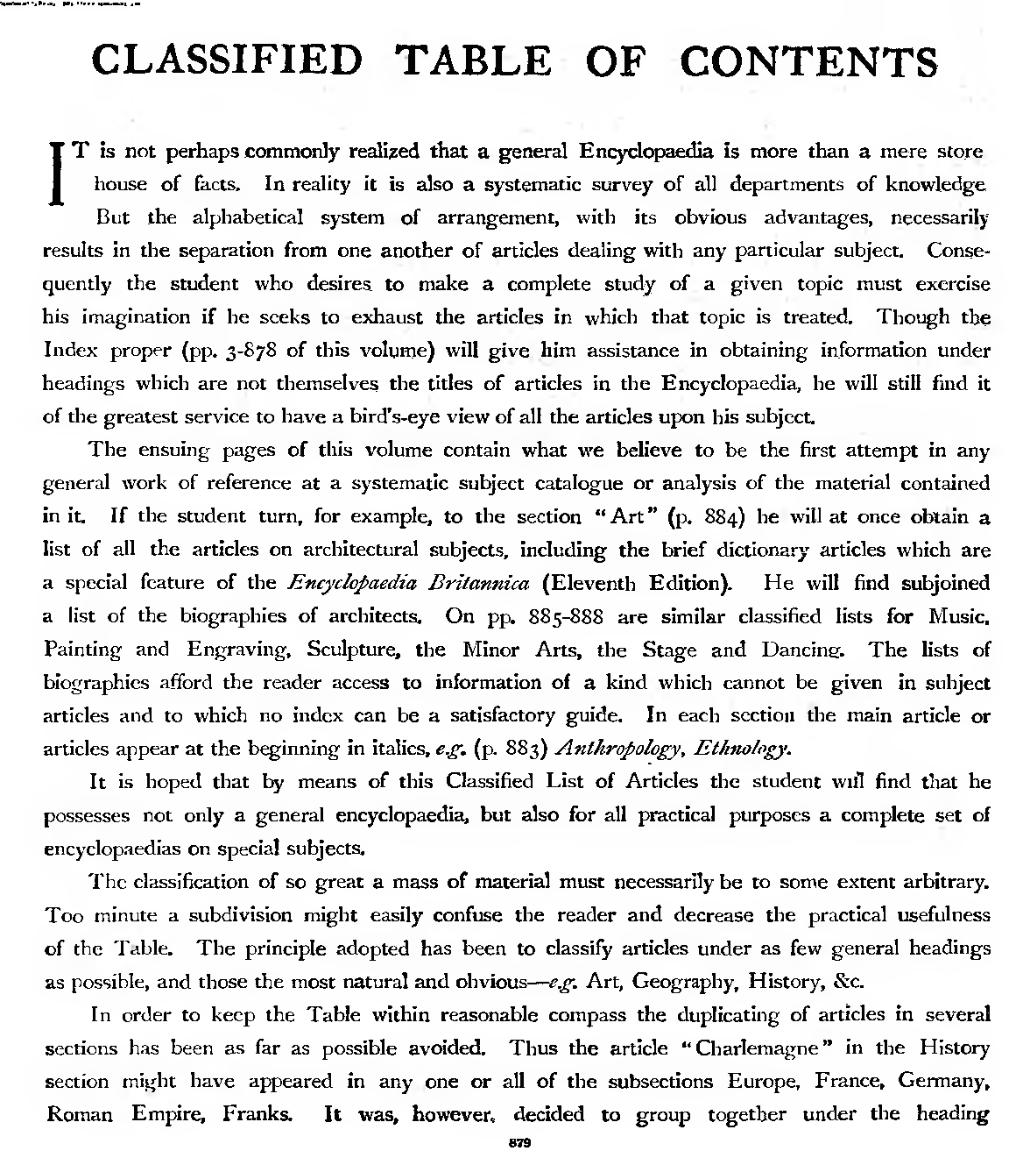CLASSIFIED TABLE OF CONTENTS
IT is not perhaps commonly realized that a general Encyclopaedia is more than a mere store house of facts. In reality it is also a systematic survey of all departments of knowledge But the alphabetical system of arrangement, with its obvious advantages, necessarily results in the separation from one another of articles dealing with any particular subject. Consequently the student who desires to make a complete study of a given topic must exercise his imagination if he seeks to exhaust the articles in which that topic is treated. Though the Index proper (pp. 3-878 of this volume) will give him assistance in obtaining information under headings which are not themselves the titles of articles in the Encyclopaedia, he will still find it of the greatest service in have a bird’s-eye view of all the articles upon his subject.
The ensuing pages of this volume contain what we believe to be the first attempt in any general work of reference at a systematic subject catalogue or analysis of the material contained in it. If the student turn, for example, to the section “Art” (p. 884) he will at once obtain a list of all the articles on architectural subjects, including the brief dictionary articles which are a special feature of the Encyclopaedia Britannica (Eleventh Edition). He will find subjoined a list of the biographies of architects. On pp. 885-888 are similar classified lists for Music, Painting and Engraving, Sculpture, the Minor Arts, the Stage and Dancing. The lists of biographies afford the reader access to information of a kind which cannot be given in subject articles and to which no index can be a satisfactory guide. In each section the main article or articles appear at the beginning in italics, e.g. (p. 883) Anthropology, Ethnology.
It is hoped that by means of this Classified List of Articles the student will find that he possesses not only a general encyclopaedia but also for all practical purposes a complete set of encyclopaedias on special subjects.
The classification of so great a mass of material must necessarily be to some extent arbitrary. Too minute a subdivision might easily confuse the reader and decrease the practical usefulness of the Table. The principle adopted has been to classify articles under as few general headings as possible, and those the most natural and obvious—e.g. Art, Geography, History, &c.
In order to keep the Table within reasonable compass the duplicating of articles in several sections has been as far as possible avoided. Thus the article “Charlemagne” in the History section might have appeared in any one or all of the subsections Europe, France, Germany, Roman Empire, Franks. It was, however, decided to group together under the heading
879
